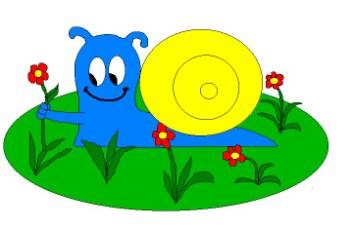Man and Mollusc
Lesson Plan for Grade 4 to Grade 8

Lesson
Goals:
-
Introduce
what a mollusc is touching on the the taxonomy system of kingdom, phylum,
class, order, genus, species. You may want to printout the Taxonomy Article
found on the checklist
- Learn general anatomy
of three of the seven molluscan classes:
- Gastropods:Marine,
land and freshwater snails
- Bivalves: Marine (oysters,clams
scallops)
- Cephalopods: (Octopus,
squids and nautilus)
- Get to know where different
molluscs live. (Marine, terrestrial, freshwater, desert, mountains and most
likely in your own back yard
- Learn what do molluscs
eat; carnivores, herbivores, parasites
- Learn how molluscs move
around or how they secure themselves so to remain firmly rooted to the spot
- How do molluscs mate
and grow to maturity. (many molluscs are hermaphrodites and this might be
quite a new concept for the students)
- How do we as humans use
molluscs and why are they so important to us. Discuss food, industrial uses,
medicines being produced from molluscs, etc. Check out or even print out the
Man and Mollusc article on Man's Uses of Molluscs. This is listed on the printout
check list on the main lesson plan
- How are molluscs like
other animals and how are they different
- How do molluscs interact
with theie environment. Many are friends, pest or even kept as pets. Many
can become environmental pests while others are being farmed (Aquaculture,
mariculture heliciculture) to help feed the world.
- How do environmental
problems prove disastrous to molluscs? Such things as loss of environment
through oil spills, dynamiting coral reefs for the coral and fish, dredging
sand for beaches, raking the ocean floor for food thus destroying the mollusc's
home, habitat destruction such as deforestation wiping out or severally endangering
terrestrial molluscs, molluscan problems such as the accidental introduction
through the emptying of ship's ballast tanks which often carry the veliger
state of many molluscs such as the zebra mussel which is now a serious infestation
in the Great Lakes. plus many more problems.
- Discuss shell collecting
and even how molluscan are now being kept as pets especially in salt -water
aquariums. It's the new in thing today.
Shell Hands-on Activities:
- Have children bring in
any shells that they might have personally. Place each child's shells in a
zip lock bag and label them well
- Teachers, you may want
to set up a classroom habitat terrarium, aquarium or other similar display.
See instructions on how to do this in the main lesson plan. Encourage your
students to assist un this project
- Bring in edible shells
that are purchased from groceries store or from sea food markets so that the
children can actually see the animal, not just its shell. If to be kept for
a few days, these may be preserved in rubbing alcohol
- Set up a shell display
and have the children try to place the shells into the correct class. Be sure
to print out the "Visual Shell Kit" available and you and your students
may actually be able to label the genus and species of the shell
- If real energetic and
you have a good parent help system in place; you may even put on a molluscan
meal. (Try clam chowder, fried scallops, escargot in garlic butter. There
are many great shell fish recipes available both on the Man and Mollusc Edible
Molluscan Data Base at: molluscan_food_mp.html
or on the WWW.
- Set up a terrarium, aquarium
fresh or salt water or design a classroom tide and rock pool if you live by
the ocean. This must be thought through carefully and well before starting
the lesson plan. Instruction to assist you are located on the general Lesson
Plan
Story and Book Time:
- For younger grades, read
"Sammy's Adventure to the class. Have a short discussion to see how many
things they can learn about a land snail from the story.
- Borrow Molluscan books
from your school library or town libraries.
- Use the Visual shell
kit provided on the checklist
- Use articles such as
Amazing Molluscan Facts:which is listed as a print out on the checklist
- Use Man and Mollusc's:
A Beginner's Guide to the Molluscs listed on the general check list of print
outs
Discussion Time:
- Discuss what your students
have learned so far from this lesson plan
- Let your students tell
you about shell stories or trivia they may know.
- A great discussion can
be around how shells have been used and how they may be used in the future.
See or even printo the Uses of Molluscs article found on the checklist
- Discuss the environmental
importance of molluscs
- Discuss
how they can also be problems as well as pets
Miscellaneous Activities:
(Children's art work, poems etc. can be displayed on the Man
and Mollusc Web site if they would like to see them there. Visit the Kid's Zone
(/kid_zone.html)
for details.
- For the younger children,
colour prepared molluscan pictures. Try to provide each child with a gastropod,
bivalve and cephalopod picture
- Draw a gastropod, Bivalve
and a cephalopod
- Printout and have the
stidents label molluscan anatomy pages
- Write out a short report
to accompany these pictures
- Write their own snail
story, limerick or poem
- Make a classroom poster
or collage or diorama
More Ideas:
- Field trips are great
for students. Go to the ocean, beach and or tide pools, lakes, streams or
other area that molluscs can be found. Plan this well in advance so as to
be not disappointed by not locating molluscs. See the general lesson plan
to help you arrange for such a trip
- Find out if there is
a shell club of a shell collector in your area that may be willing to come
out and speak to your class
- Museums, aquarium's if
available are other great field trips but plan well ahead

